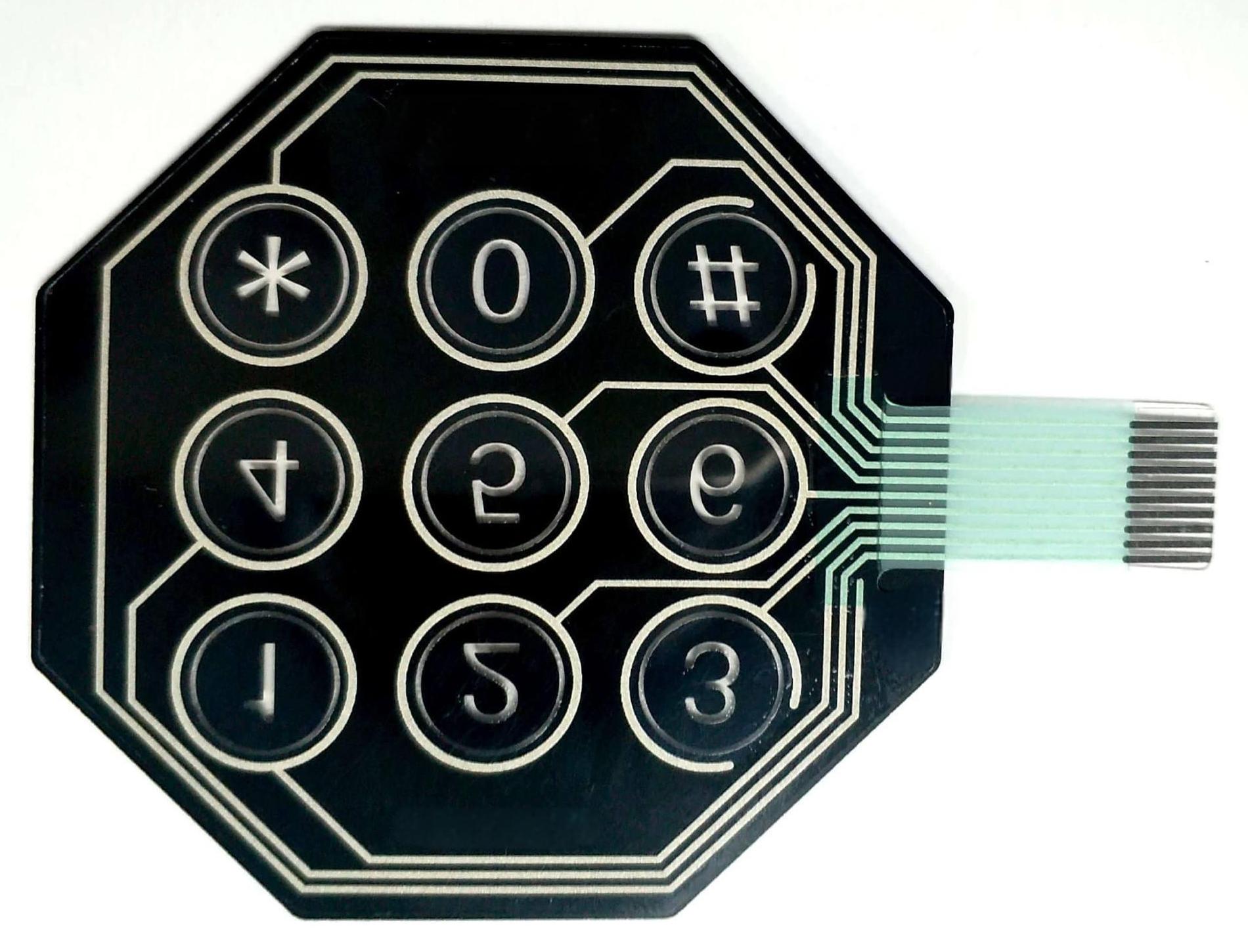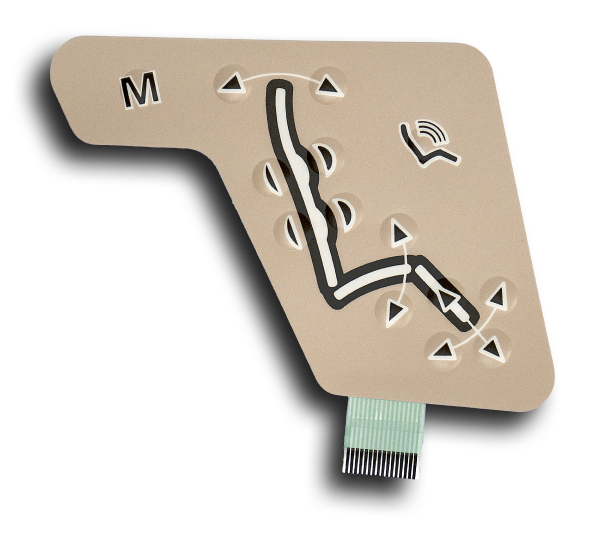The Production Process Behind Membrane Layer Change: What You Need to Know
The production process behind membrane layer switches over combines cautious design, product selection, and quality assurance. It begins with recognizing the ins and outs of membrane button style and proceeds with various phases, including product options and printing methods. Each stage plays a necessary role in making certain functionality and longevity. The complexities of layer construction and the extensive screening standards might disclose insights that are not right away noticeable. What exists beyond these foundational aspects?
Recognizing Membrane Switch Style
Although membrane layer switches might show up simple initially look, their layout involves elaborate factors to consider that guarantee capability and sturdiness. The layout process begins with a complete understanding of customer needs, consisting of the user interface's intended application and environmental factors. Comfort designs is a vital element, as the format should help with convenience of use while ensuring that responsive comments meets individual expectations.Moreover, the layering of elements, such as visuals overlays, sticky layers, and conductive traces, should be precisely engineered. membrane switch. This layered setup not just influences the button's responsiveness yet additionally influences its durability. Focus is offered to the securing methods utilized to safeguard against dampness and dirt, which might jeopardize performance. Additionally, layout factors to consider include looks, where color schemes and aesthetic quality improve user experience. Ultimately, the layout of membrane switches equilibriums performance, user experience, and resilience, ensuring that they fulfill the demands of numerous applications successfully
Materials Made Use Of in Membrane Switch Production
When choosing products for membrane button manufacturing, it is important to ponder both performance and durability. The key materials consist of polyester and polycarbonate films, which give flexibility and toughness. These films are frequently covered with adhesive to assure appropriate bonding to substratums. Conductive inks, usually made up of silver or carbon, are vital for creating electric connections within the button, permitting trusted operation.Additionally, a protective layer, such as a difficult layer, is frequently related to improve scrape resistance and longevity. The option of backing product, such as acrylic or foam, can considerably affect the button's tactile feeling and total user experience. Various ecological factors, consisting of temperature and moisture, need to guide material choice to ensure peak efficiency in specific applications. Eventually, the ideal mix of products adds to the membrane switch's capability and lifespan, making notified options necessary for suppliers.
The Printing Process: Creating Video and Text
The printing process in membrane switch production plays a substantial duty in generating top notch graphics and message. Different visuals layout strategies are used to assure aesthetic allure and capability, while mindful ink selection methods are vital for toughness and efficiency. Comprehending these aspects is fundamental for achieving best cause membrane switch design.
Graphic Design Techniques
Graphic layout methods play a necessary function in the printing procedure of membrane layer switches, as they specify exactly how graphics and text will inevitably appear on the final item. Effective visuals style involves the critical use font styles, shades, and designs to improve readability and aesthetic charm. Developers commonly utilize vector graphics for scalability, making certain that pictures stay sharp at different sizes. Furthermore, attention to contrast and placement is important, as it affects individual communication and aesthetic top quality. The incorporation of branding components, such as logos, should be taken care of with care to maintain brand name integrity. In general, thoughtful visuals design methods add considerably to the performance and good looks of membrane layer switches, affecting individual experience and item performance.
Ink Choice Techniques
Picking the appropriate ink is essential for attaining the desired aesthetic quality and durability in membrane button manufacturing. Various ink types are used, including solvent-based, water-based, and UV-curable inks. Each kind supplies distinct features, such as adhesion, flexibility, and resistance to environmental elements. Solvent-based inks are commonly preferred for their durability and vibrant colors, while water-based inks are extra ecologically friendly but may have limitations in adhesion. UV-curable inks provide rapid curing and durable efficiency. In addition, shade matching methods ensure that the chosen inks align with design specifications. Eventually, the choice of ink need to think about aspects such as application technique, substrate compatibility, and end-use requirements to attain premium cause membrane button graphics and message.
Layer Building and Assembly

Material Selection Process
A cautious choice of products is crucial in the manufacturing procedure of membrane layer buttons, as it straight affects capability and resilience. The main materials utilized include polyester, polycarbonate, and different conductive inks. Polyester is usually favored for its exceptional resistance to chemicals and abrasion, making it appropriate for extreme atmospheres. Polycarbonate, on the various other hand, supplies remarkable clearness and effect resistance, which is useful for applications calling for visibility and toughness. Conductive inks, generally composed of silver or carbon, are important for creating dependable electrical pathways. In addition, the choice of glue materials affects the overall honesty of the button - membrane switch. Evaluating variables such as environmental direct exposure, tactile responses, and aesthetic needs overviews suppliers in choosing the very best products for their certain applications
Layer Bond Techniques
Adhering layers in membrane layer button construction is an important procedure that guarantees performance and long life. Different bond techniques are utilized to secure ideal bonding between layers, which generally consist of the use of adhesives, warmth, and stress. Pressure-sensitive adhesives (PSAs) are typically made use of for their convenience of application and instant bonding capabilities. In addition, thermal bonding methods can be used, where heat is utilized to activate glue buildings, securing a strong bond. Bonuses The option of bond my response approach greatly relies on the materials included and the specific application demands of the membrane switch. Proper positioning and consistent application of adhesives are necessary to prevent issues, protecting the button operates effectively throughout its desired lifespan.
Quality Assurance Measures
Ensuring high quality control during the layer building and construction and setting up of membrane switches is important for preserving efficiency and reliability. This procedure commonly involves a number of important procedures, including detailed evaluations at each stage of manufacturing. Suppliers utilize advanced testing techniques, such as peel examinations and attachment analyses, to validate the honesty of layer bonds. In addition, aesthetic evaluations are conducted to recognize any issues in printing or material incongruities. Ecological problems, such as temperature level and moisture, are thoroughly kept an eye on to ensure optimal healing and attachment. Furthermore, routine calibration of devices aids preserve specific production criteria. By carrying out these quality assurance procedures, makers can considerably minimize the threat of item failing, guaranteeing that the final membrane switches meet the required requirements and client assumptions.
Testing and High Quality Control Steps

Technologies in Membrane Layer Change Technology
As advancements in modern technology continue to evolve, membrane layer switches are taking advantage of ingenious developments that boost their performance and customer experience. One significant development is the assimilation of capacitive touch innovation, which permits even more responsive and instinctive interface. This change not only boosts looks but additionally decreases mechanical damage, prolonging the life-span of the switches.Additionally, improvements in graphic overlay materials have actually resulted in boosted resilience and resistance to ecological factors such as wetness and UV light. These products now use enhanced clearness and illumination, further raising the aesthetic appeal.Furthermore, the incorporation of wise modern technology is transforming membrane changes right into interactive control panels, allowing connection with IoT tools. This connectivity promotes a smooth customer experience, paving the means for applications in different industries, from health care to customer electronic devices. Jointly, these developments setting membrane layer switches over as crucial elements in modern-day gadget design.
Frequently Asked Concerns
The length of time Does the Membrane Layer Switch Over Production Process Take?
The duration of the membrane switch manufacturing procedure can differ considerably. Elements such as intricacy, materials used, and manufacturing quantity influence timelines, with normal manufacturing varying from a couple of days to numerous weeks for conclusion.
What Are the Common Applications for Membrane Buttons?
Membrane layer buttons are commonly made use of in various sectors, consisting of automotive controls, household appliances, medical devices, and consumer electronics (membrane switch). Their versatility and resilience make them optimal for applications needing easy to use interfaces and reliable efficiency in diverse environments
Can Membrane Layer Switches Over Be Personalized for Certain Needs?

What Is the Life-span of a Normal Membrane Layer Switch?
The lifespan of a common membrane layer button varies, however normally, it varies from 1 to 5 million cycles. Variables such as use, setting, and material high quality substantially affect durability and overall performance in time.

Are Membrane Layer Switches Over Eco-friendly?
The ecological kindness of membrane switches varies. Some materials made use of might not be recyclable, while others can be green. The total influence relies on producing techniques and products, demanding mindful consideration during option and disposal. The production process behind membrane switches over combines cautious design, product choice, and top quality control. It begins with comprehending the complexities of membrane switch design and proceeds with various phases, including product options and printing techniques. When picking products for membrane button manufacturing, it is essential to ponder both performance and durability. A mindful selection of products is vital in the manufacturing procedure of membrane layer switches, as it straight influences functionality and longevity. The option of attachment technique greatly depends on the materials entailed and the particular application needs of the membrane button.